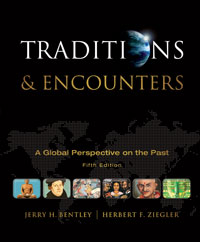1 Map A. Dominion of Canada Compare the efforts of the United States and Latin America to create a multi-cultural society.
2 Explain the relationship between American economic development and Europe. How did Europe function in different American economies?
3 What environmental and geographic factors influenced these patterns of settlement?
4 Contrast the granting of independence to Canada with that of other colonies in the British Empire. How was Canada different?
5 Map B. Spanish-American War The Spanish-American war is considered by most historians to be a one-sided contest between the overwhelming forces of the U.S. and a small, far-off, crumbling Spanish empire. What military events confirm this view of the war? In what way was the U.S. effort a "mopping up" of an already defeated regime?
6 How did the conquest of Cuba change the world and self-image of the United States? How were the new territories conquered in the war treated by America? How did America's conquest of these areas raise future problems?
7 Create the diary entries of a soldier involved in the 1898 war, on either side. Include reasons for enlistment, experience of moving to the theater of battle, combat, and details of the aftermath of the war in your account.
8 Map C. Imperialism in Africa Why was the continent of Africa carved up between European powers? What events were taking place on the European continent that helped fuel rivalries in Africa?
9 Which European countries possessed the greater number of colonies in Africa?
10 What were some of the resources that made the colonization of Africa so lucrative? Which countries were able to control these precious resources?
11 When did the countries of Europe start losing their African colonies? What events precipitated this wave of decolonization?
12 Map D. Imperialism in Asia Discuss the reasons why European countries wanted overseas empires. What was the primary force that motivated imperialism?
13 Compare the colonial experiences of Africa and India. How important was it that India had one primary colonial power (Britain) while Africa had many?
14 Explore the relationship between nationalism and imperialism. Does imperialism always cause the increase in nationalist aspirations among subject peoples?
15 What were the overall effects of imperialism on world history? Explain how developments in late nineteenth century altered both European societies and those in subject countries.





